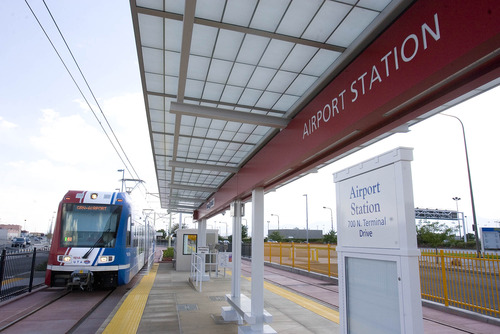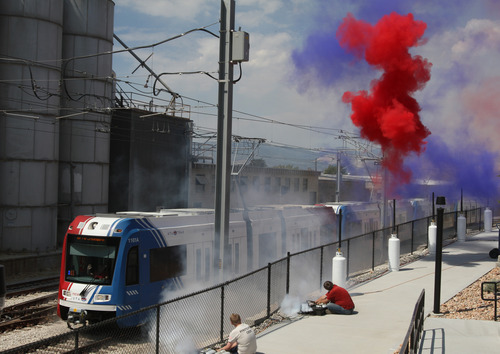This is an archived article that was published on sltrib.com in 2014, and information in the article may be outdated. It is provided only for personal research purposes and may not be reprinted.
Layton • Utah used careful planning to avoid some horrible effects of rapid growth in the past 20 years, experts say, and it's time to do it again. That probably includes raising motor-fuel taxes to pay for transportation improvements.
Speakers delivered that message Thursday on Weber State University's Layton campus during the Top of Utah Transportation Expo, sponsored by the Utah Department of Transportation and the Utah Transit Authority.
Robert Grow, founder of Envision Utah, said officials in the 1990s planned well to handle 1 million additional residents by 2020. He said the state needs to repeat the effort as projections call for Utah's population to nearly double by 2050, adding 2.5 million more people.
Planning in the 1990s changed the designs and practices of new communities to slow urban sprawl, he said. Without such change, officials figured sprawl would have eaten up an extra 300 square miles of agricultural land over 20 years — but it claimed 100 square miles instead.
That happened as the average size of all single-family lots decreased by 22 percent over the period, from .32 acres to .25 acres. He said Utahns also decreased per-capita water use by 25 percent, and air pollution decreased even while the population grew.
Expanding mass transit — including adding 140 miles of TRAX and FrontRunner lines since then — now takes 120,000 auto trips a day off the road. "Without that, I-15 would grind to a halt every day," Grow said, and it has helped reduce air pollution.
With the population jump projected, Gov. Gary Herbert has started another planning process called "Your Utah, Your Future" focused on handling the growth.
Grow said it will ask Utahns to figure what types of growth they want. But he said to handle the rising population in Salt Lake, Davis and Weber counties — where little open land remains — officials may need to encourage high-density communities around mass-transit stations where people can work, live and play in the same area.
Grow said people who choose that high-density lifestyle will help reduce the need for more roads and driving, help improve air quality and help conserve water and preserve open space.
Natalie Gochnour, associate dean of the Eccles School of Business at the University of Utah, said handling transportation for so many more people will take money — and not spending it will hurt the state's economy.
"It's actually a pretty tough job" to come up with that money, she said.
But she notes that Utah has not raised its 24.5-cents-per-gallon gasoline tax since 1997. If the tax had kept up with inflation, it would be 14 or 15 cents a gallon higher.
"I think a motor-fuel tax increase is long overdue in this state," she said. "I don't think of it as a tax increase but as a way to recover purchasing power that has been lost." She notes that funding from gas taxes has been falling as fuel efficiency has improved and people are driving fewer miles.
Borrowing more money is not an option, Gochnour said, because the state borrowed heavily in recent years to do such things as rebuild Interstate 15 in Utah County. In fact, she said that 52 percent of the state's Transportation Investment Fund this year went to debt, and only 48 percent went to actual improvements.
That is one of many transportation funds in the state, and is the one used for projects designed to increase capacity on highways — including widening old ones or building new highways.
The Legislature plans this summer to study numerous options to increase taxes for transportation, including possible motor-fuel tax hikes or sales-tax hikes for mass transit.





